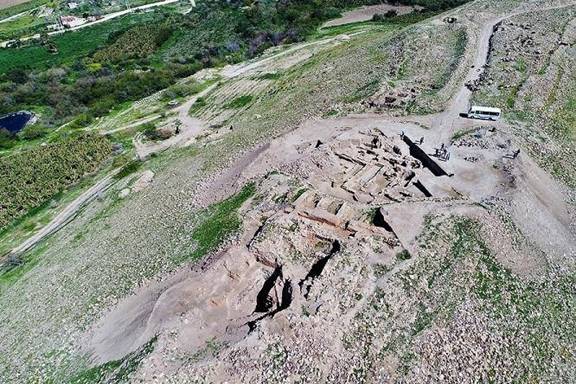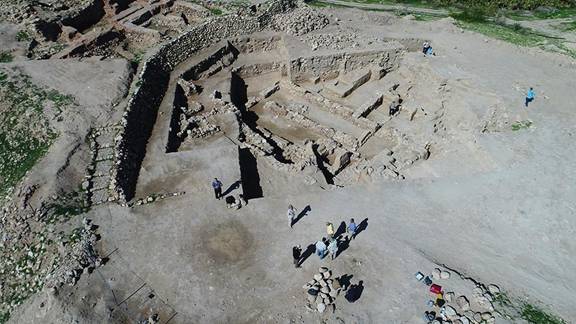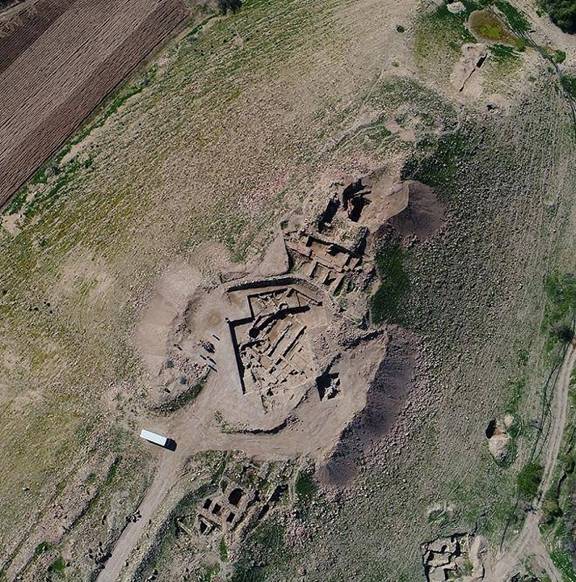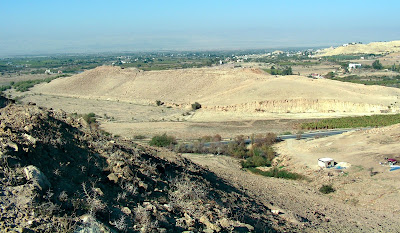在Tall
el-Hammam
的“亚伯什亭”(Abel-Shittim
)
(https://smyrnaean.blogspot.com/2006/04/tall-el-hammam-not-shittim.html
)
|
从Tall
el-Hammam俯瞰约旦河谷 |
在青铜时代晚期,Tall
el-Hammam (简称TeH)
周围的区域,被大多数学者认定为亚伯什亭(Abel
Shittim,希伯来语意为“哀哭的皂荚木”),这是以色列人进入应许之地之前的营地(民记
25:1,申
34:9;书
2:1;3:1)。在
Merrill
的文章“The
Shittim Plain”下,他说∶
也许若要确定什亭的地点,我们更应该关注一个被称为“哀哭的皂荚木”(Abel
Shittim) 的事件以及
Tall el-Hammam
周围平原上的一个地区。
当摩西和约书亚在
TeH 周围扎营时,他们并没有留下太多可辨认的文物。Tall
el-Hammam
卫城有一座小型青铜后期的结构的,可能是一座了望塔/信号塔,用于与耶路撒冷、耶利哥和约旦河谷周围的其他城市进行通信。
_________________________
参考书目
Aharoni, Yohanan. The
Land of the Bible: A Historical Geography.
Translated by Anson F. Rainey. 2nd ed. Louisville: Westminster/Knox,
1981), 419.Avi-Yonah, Michael. The Madaba
Mosaic Map with Introduction and Commentary (Jerusalem:
Israel Exploration Society, 1954), 37.
Davies, Graham I. The
Way of the Wilderness a Geographical Study of the Wilderness Itineraries
in the Old Testament. SOTSMS 5 (Cambridge:
Cambridge University Press, 1979), 36.
Glueck, Nelson. Explorations
in Eastern Palestine II. AASOR 15. (New
Haven, CT: ASOR, 1935), 378;
Glueck, Nelson. “Some
Ancient Towns in the Plains of Moab.” BASOR 91
(1943): 7–26 [see 15].
Harrison, R. K.
“Shittim,” ed. Edward M. Blaiklock, The New
International Dictionary of Biblical Archaeology (Grand
Rapids, Mich.: Zondervan, 1983), 413.
Kaiser, Jr., Walter C.,
and Duane Garrett, eds. NIV Archaeological
Study Bible: An Illustrated Walk Through Biblical History and Culture (Grand
Rapids: Zondervan, 2006), 233.
Khouri, Rami G. Antiquities
of the Jordan Rift Valley (Manchester, MI:
Solipsist, 1988),76.Miller, J. Maxwell and Gene M. Tucker, The
Book of Joshua, The Cambridge Bible Commentary of the English Bible (Cambridge,
Mass.: Cambridge University Press, 1974), 199.
MacDonald, Burton, East
of the Jordan: Territories and Sites of the Hebrew Scriptures, ed.
Victor H. Matthews, ASOR Books 6 (Boston, MA: American Schools of
Oriental Research, 2000), 90.
Merrill, Selah. “Modern
Researches in Palestine.” Journal of the
American Geographical Society of New York 9
(1877): 109–25 [see 117].
Merrill, Selah. “Modern
Researches in Palestine.” Palestine
Exploration Fund: Quarterly Statement (PEFSt). 11,
no. 1 (1879): 138–54 [see 144].
Negev and Gibson, call the site Tell el-Harman
[sic. Tall el-Hammam] “Abel Shittim; Shittim, ” in The
Archaeological Encyclopedia of the Holy Land (1
Vol., Rev and updated ed. Avraham Negev and Shimon Gibson, 3rd ed.
2001), 1.
Slayton, Joel
C. “Shittim.” In Anchor Bible Dictionary,
edited by David Noel Freedman (New York: Doubleday, 1996), 5:1222.
Thomson, William M. The
Land and the Book: Lebanon, Damascus, and Beyond Jordan.
Vol. 3. 3 vols. (New York, NY: Harper & Brothers, 1886), 3:669.
Walton, John H., Victor H. Matthews, and Mark W.
Chavalas. The IVP Bible Background
Commentary: Old Testament (Downers Grove,
IL: InterVarsity Press, 2000), 169, 213.
作者在脸书2020年三月5日的更新消息:
在约旦河谷的
Tall el-Hammam
挖掘
15 年后,我们终于获得了
DOA 的正式许可,可以在现场使用无人机。空中拍摄得的照片,真了不起。第一张照片是卫城向东北看。第二,我们在过去几年中的挖掘工作,一直延伸到中青铜时代
2期。较低的遗迹一样大(总共超过
100
英亩)。这是约旦河谷最大的遗址,也是几个世纪以来,在黎凡特所挖掘的(青铜早期,青铜晚期)最大的遗址之一(青铜中期的夏琐和亚实基伦更大)。我们相信青铜中期的破坏层是所多玛。青铜晚期时期的,是亚伯什亭。
罗马时期的,是Livias。



[1] Merrill, Selah. “Modern Researches in Palestine.” Journal of the American Geographical Society of New York 9 (1877): 109–25 [see 117]; Merrill, Selah. “Modern Researches in Palestine.” Palestine Exploration Fund: Quarterly Statement (PEFSt). 11, no. 1 (1879): 138–54 [see 144].
[2]
Walter C. Kaiser, Jr., and Duane Garrett,
eds. NIV Archaeological Study
Bible: An Illustrated Walk Through Biblical History and Culture (Grand
Rapids: Zondervan, 2006), 233.
「圣经考古学」主页
